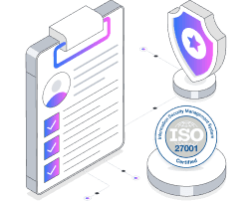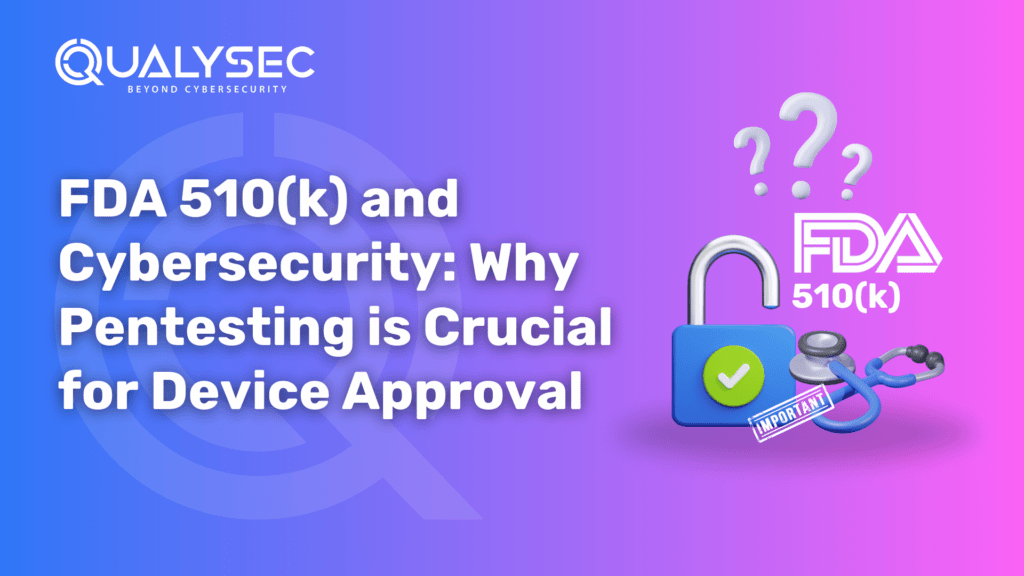FDA 510(k) and Cybersecurity: Why Pentesting is Crucial for Device Approval
The United States Food and Drug Administration initiates the 510(k) clearance as a regulatory pathway to ensure that a particular medical device is safe and effective for its intended use. The US FDA uses this process to clear a device for commercial release. FDA 510(k) penetration testing for Medical Devices plays a crucial role in evaluating the security of these devices. Cybersecurity is an activity that tries to impair unauthorized penetration, alteration, being put to inappropriate use, denial of service, or thwarting off unauthorized access to medical device information that has been stored, accessed, or sent to an outside recipient, according to the US FDA. Medical devices are increasingly becoming networked. Consequently, it faces threats through cybersecurity attacks including hacking, data breaches, and malware attacks. Designing and developing security within medical devices can be important. Threats and vulnerabilities cannot be eliminated. Especially, there are significant difficulties in reducing the level of risks regarding cybersecurity. When organizations do not maintain cybersecurity correctly, they compromise device functionalities, lose personal or medical data, and increase the possibility of spreading threats to other connected networks or devices. Cybersecurity incidents have made medical devices and hospital networks inoperative, thereby disrupting the delivery of patient care across healthcare facilities in the US. Such cyberattacks and exploits may also cause patients harm through clinical hazards, such as a delay in diagnosis and/or treatment of patients. Incidents Caused by Compromised Cybersecurity The following are some of the key incidents across the healthcare sector that emphasize the need for cybersecurity for patient safety: “Explore: FDA Cybersecurity Guidelines for Medical Devices“ The Key Cybersecurity Considerations for the 510(k) Clearance The FDA 510(k) penetration testing guidance is specific to pre-market submissions general principles of cybersecurity for medical device manufacturers are as follows: Challenge One of our clients is a leading manufacturer of life-support devices. The client needed to navigate the FDA’s cybersecurity requirements for a next-generation ventilation system. Three major hurdles lay in their path: What is an FDA 510(k) Submission? Your 510(k) submission should demonstrate that your device is similar to a previously approved device and functions in a comparable manner. By aligning your device with a predicate device that is already in use and proven safe, it is expected that your device will also be safe and effective. 1. Your 510(k) submission must: 2. 510(k) Predicate Device A predicate device is a device already marketed in the marketplace which your 510(k) submission must show to be very similar to your device. The predicate device must have: Your FDA 510(k) penetration testing submission must meet three important criteria. If your device belongs to Class II and does not have a substantial equivalent, you may need to pursue the de novo pathway, especially if it is a new and innovative medium-risk device. A successful 510(k) application requires a suitable predicate device as a reference. Substantial equivalence does not mean it has to be similar; it’s a comparable device that shows competitive differentiation and advantage for your business. It requires finding the right balance, so make your decisions carefully. Who Needs to Submit a 510(k)? 1. American Medical Device Manufacturers The majority of 510(k) submissions are made by companies wishing to market Class II medical devices in the United States. If you are proposing to launch such a device, the person in charge of quality and regulation within your company would typically handle the 510(k) submission as part of the necessary steps to bring the product to market. 2. Representatives of Non-U.S. Manufacturers The second largest volume of applicants according to the regulations of the FDA are appointed representatives of the manufacturer of the device, but originating from a source outside of the United States. Non-US makers who intend to sell their device in the US would have their designated representative apply for their 510(k). 3. Repadder/ Relbeller In certain instances, a 510(k) application might be required by repackers and relabellers in a medical device supply chain. This often happens with special updates, where important changes are made, like adding new information to labels or making significant repackaging changes that affect the safety of the device. Talk to our Cybersecurity Expert to discuss your specific needs and how we can help your business. Schedule a Call The FDA 510(k) Submission Process 1. Identifying Your Predicate Device For an organization, it’s far critical to choose a predicate tool appropriately when they intend to file a 510(ok) application to the FDA. This is so because the 510(okay) method calls for the device to reveal significant equivalence to an already legally marketed predicate tool. When a firm clears a device, it must be very close to the predicate device in use, indications for use, and technology. Added features or enhancements can be incorporated into the product but should not introduce new issues about safety or effectiveness. Not selecting an appropriate predicate device might make firms put more effort and resources into locating one. 2. Guidance and Software Considerations It is also essential to examine any relevant special controls and guidance documents about the device being considered. These assist with giving advice on which tests and criteria must be met to demonstrate similarity to the predicate device. This is extremely helpful information that is often found in the predicate device’s 510(k) submission, which will detail tests and research performed, thus giving insight into the FDA expectations for your device. When submitting a device with software, it is important to consider specific guidelines and risk classifications related to the software. The documentation needed for software will differ based on the software’s risk classification. 3. Clinical Data Inclusion The FDA may request that clinical data be included in a 510(k) submission to show that any changes to its intended uses are in line with the original intended applications. Despite the best efforts of the FDA to clarify things through The 510(k) Program Guidance, there is sometimes disagreement between the agency and sponsors. This usually happens when the sponsors feel that non-clinical data would be sufficient to




